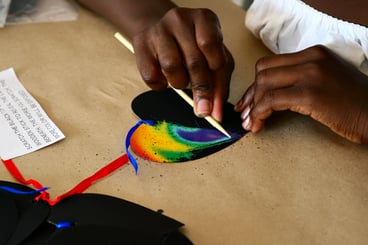Embracing Diversity: Supporting LGBTQ+ Students in Inclusive Classrooms
 In today's diverse educational landscape, it's crucial for educators to understand and support their LGBTQ+ students. By fostering positive environments, educators can empower their school’s LGBTQ+ community to thrive academically, socially, and emotionally. To create educational equity for LGBTQ+ students, educators must understand why this work is important, identify their own biases, and strive to transform their classrooms into safe and inclusive spaces for students to grow and learn.
In today's diverse educational landscape, it's crucial for educators to understand and support their LGBTQ+ students. By fostering positive environments, educators can empower their school’s LGBTQ+ community to thrive academically, socially, and emotionally. To create educational equity for LGBTQ+ students, educators must understand why this work is important, identify their own biases, and strive to transform their classrooms into safe and inclusive spaces for students to grow and learn.
LGBTQ+ students face unique challenges in educational settings. Research shows that they often experience higher rates of bullying, harassment, and mental health issues than their heterosexual and cisgender peers. By understanding these statistics, educators can recognize the significance of supporting LGBTQ+ students. Creating an inclusive environment not only improves their academic outcomes but also contributes to their overall well-being and self-esteem.
Educators must reflect on and identify their own biases to ensure they are providing equitable support to LGBTQ+ students. Recognizing and addressing these biases is an ongoing process. Educators can start by self-reflecting, examining their beliefs and assumptions about gender and sexuality. Seeking professional development opportunities, or participating in workshops focusing on LGBTQ+ issues, are great strategies to broaden one’s understanding.
Ensuring your classroom is a comfortable and positive environment for every student is a no-brainer in teaching. However, when seeing the classroom environment through the eyes of LGBTQ+ students, educators need to take several proactive steps to create this safe space:
 Establish an inclusive curriculum: Integrate LGBTQ+ history, literature, and contributions into the curriculum when appropriate to provide representation and promote understanding.
Establish an inclusive curriculum: Integrate LGBTQ+ history, literature, and contributions into the curriculum when appropriate to provide representation and promote understanding.- Use inclusive language and terminology: Respect students' preferred names and pronouns, and educate yourself about appropriate language to create a respectful and affirming classroom environment.
- Implement inclusive policies: Advocate for and enforce anti-bullying and non-discrimination policies that explicitly include sexual orientation and gender identity.
- Celebrate diversity: Display inclusive posters, literature, and visuals that celebrate diversity and create a welcoming atmosphere for all students.
- Educate the entire school community: Organize training sessions or workshops for staff and parents to increase awareness and understanding of LGBTQ+ issues, fostering a supportive network for students.
Creating inclusive classrooms for LGBTQ+ students is essential for their success and well-being and, in turn, success for educators. By understanding the importance of this work, identifying personal biases, and implementing strategies to create safe and inclusive spaces, educators can make a profound impact on the lives of LGBTQ+ students. By embracing diversity, fostering acceptance, and advocating for inclusivity, educators play a pivotal role in shaping a more equitable and inclusive society for all.
Learn more about supporting the LGBTQ+ community at your school, visit these awesome resources: